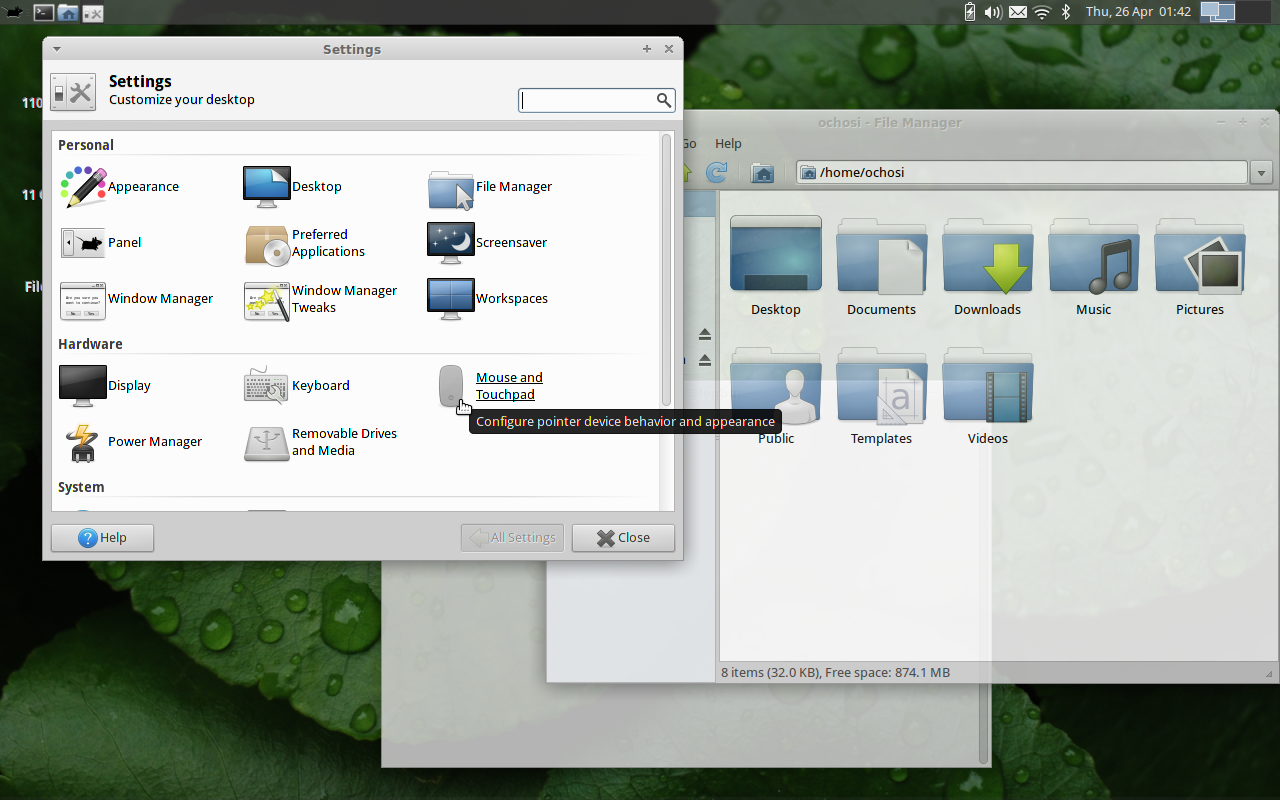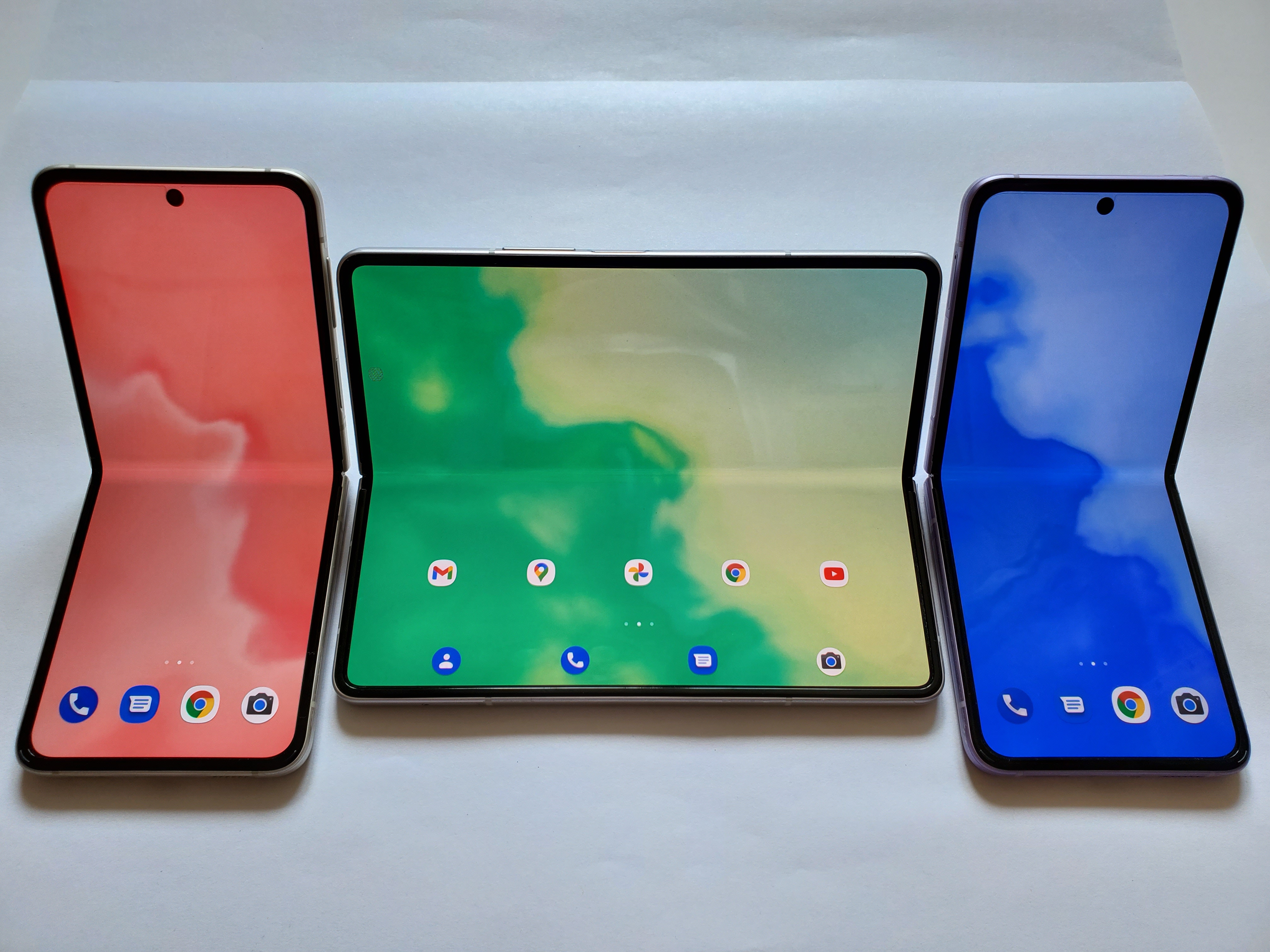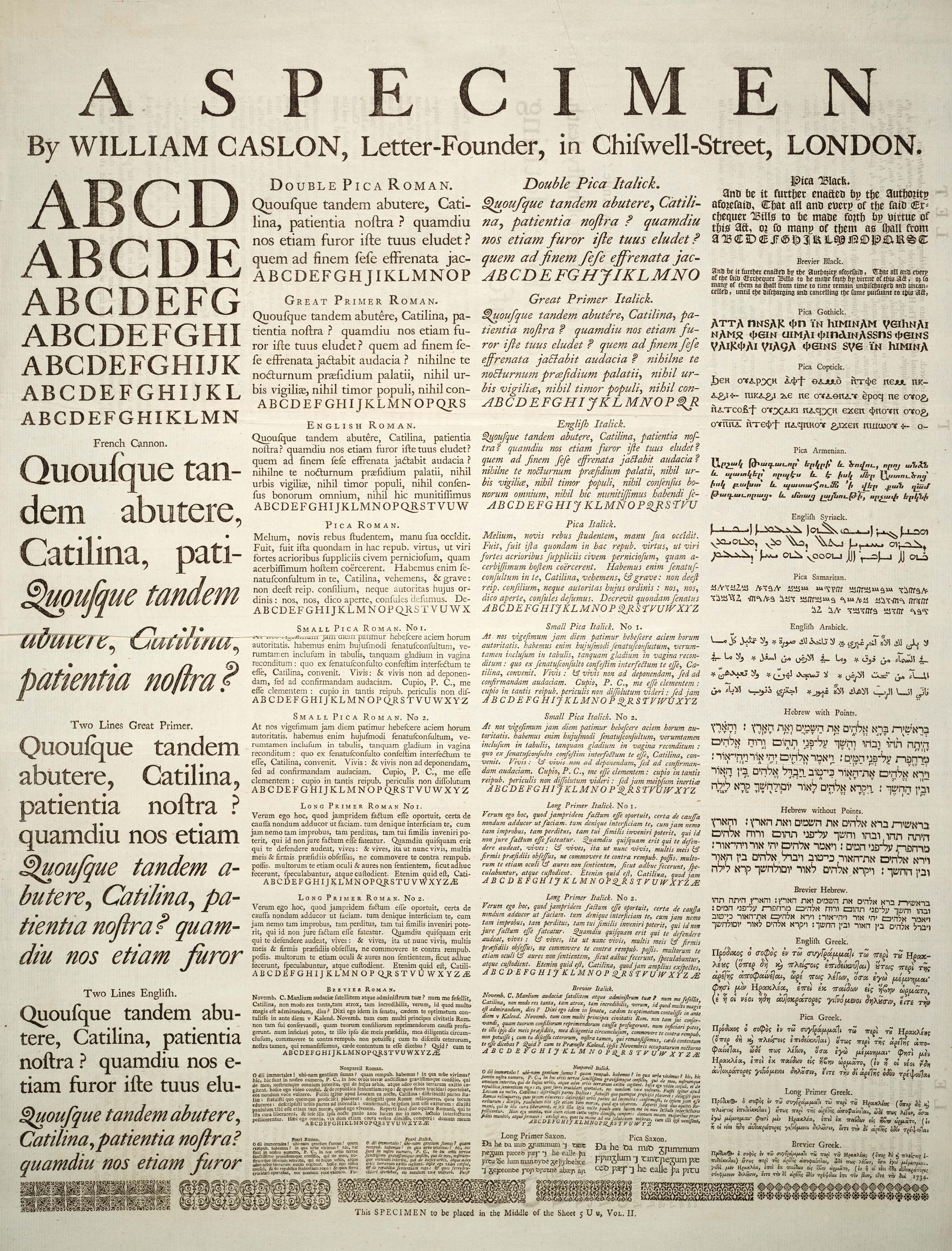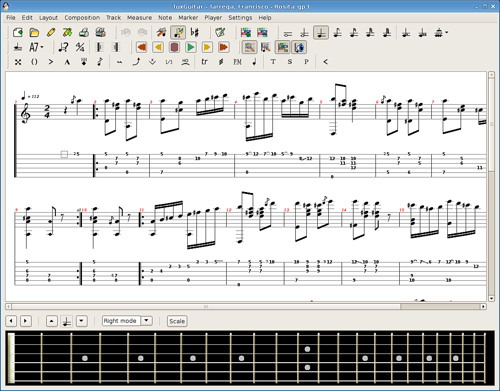|
JavaFX Mobile
JavaFX is a software platform for creating and delivering desktop applications, as well as rich web applications that can run across a wide variety of devices. JavaFX has support for desktop computers and web browsers on Microsoft Windows, Linux (including Raspberry Pi), and macOS, as well as mobile devices running iOS and Android, through Gluon Mobile. With the release of JDK 11 in 2018, Oracle made JavaFX part of the OpenJDK under the ''OpenJFX'' project, in order to increase the pace of its development. Open-source JavaFXPorts works for iOS (iPhone and iPad) and Android. The related commercial software created under the name "Gluon" supports the same mobile platforms with additional features plus desktop. This allows a single source code base to create applications for the desktop, iOS, and Android devices. Features JavaFX 1.1 was based on the concept of a "common profile" that is intended to span across all devices supported by JavaFX. This approach makes it possib ... [...More Info...] [...Related Items...] OR: [Wikipedia] [Google] [Baidu] |
Oracle Corporation
Oracle Corporation is an American Multinational corporation, multinational computer technology company headquartered in Austin, Texas. Co-founded in 1977 in Santa Clara, California, by Larry Ellison, who remains executive chairman, Oracle was the List of the largest software companies, third-largest software company in the world in 2020 by revenue and market capitalization. The company's 2023 ranking in the Forbes Global 2000, ''Forbes'' Global 2000 was 80. The company sells Database, database software, particularly Oracle Database, and cloud computing. Oracle's core application software is a suite of enterprise software products, such as enterprise resource planning (ERP) software, human capital management (HCM) software, customer relationship management (CRM) software, enterprise performance management (EPM) software, Customer Experience Commerce (CX Commerce) and supply chain management (SCM) software. History Larry Ellison, Bob Miner, and Ed Oates co-founded Oracle in ... [...More Info...] [...Related Items...] OR: [Wikipedia] [Google] [Baidu] |
OpenJDK
OpenJDK (Open Java Development Kit) is a free and open-source implementation of the Java Platform, Standard Edition (Java SE). It is the result of an effort Sun Microsystems began in 2006, four years before the company was acquired by Oracle Corporation. The implementation is licensed under the GNU General Public License 2 with a linking exception, preventing components that linked to the Java Class Library becoming subject to the terms of the GPL license. OpenJDK is the official reference implementation of Java SE since version 7, and is the most popular distribution of the JDK. History Sun's promise and initial release Sun announced in JavaOne 2006 that Java would become open-source software, and on October 25, 2006, at the Oracle OpenWorld conference, Jonathan Schwartz said that the company intended to announce the open-sourcing of the core Java Platform within 30 to 60 days. Sun released the Java HotSpot virtual machine and compiler as free software under the GNU Gen ... [...More Info...] [...Related Items...] OR: [Wikipedia] [Google] [Baidu] |
WebKit
WebKit is a browser engine primarily used in Apple's Safari web browser, as well as all web browsers on iOS and iPadOS. WebKit is also used by the PlayStation consoles starting with the PS3, the Tizen mobile operating systems, the Amazon Kindle e-book reader, Nintendo consoles starting with the 3DS Internet Browser, GNOME Web, and the discontinued BlackBerry Browser. WebKit started as a fork of the KHTML and KJS libraries from KDE, and has since been further developed by KDE contributors, Apple, Google, Nokia, Bitstream, BlackBerry, Sony, Igalia, and others. WebKit supports macOS, Windows, Linux, and various other Unix-like operating systems. On April 3, 2013, Google announced that it had forked WebCore, a component of WebKit, to be used in future versions of Google Chrome and the Opera web browser, under the name Blink. Its JavaScript engine, JavascriptCore, also powers the Bun server-side JS runtime, as opposed to V8 used by Node.js, Deno, and Blink. ... [...More Info...] [...Related Items...] OR: [Wikipedia] [Google] [Baidu] |
WebView
A WebView is a web browser that is embedded within an app. Thus a WebView is a large-scale software component, enabling the use of web content within apps. In some cases, the entire functionality of the app is implemented this way. The prominent ones are bundled in operating systems: * Android System WebView, based on Google Chrome * Apple's WebView for its devices, based on its Safari browser * Microsoft Edge WebView2 Other examples are Microsoft's legacy WebView, based on its deprecated EdgeHTML and MSHTML engines, and the WebView component in JavaFX. See also * & Blink (browser engine) ** Chromium Embedded Framework ** Electron (software framework) Electron (formerly known as Atom Shell) is a free and open-source software framework developed and maintained by OpenJS Foundation. The framework is designed to create desktop applications using web technologies (mainly HTML, CSS and JavaScri ... ** Qt WebEngine ** References {{Reflist External links Build web apps in ... [...More Info...] [...Related Items...] OR: [Wikipedia] [Google] [Baidu] |
User Interface
In the industrial design field of human–computer interaction, a user interface (UI) is the space where interactions between humans and machines occur. The goal of this interaction is to allow effective operation and control of the machine from the human end, while the machine simultaneously feeds back information that aids the operators' decision-making process. Examples of this broad concept of user interfaces include the interactive aspects of computer operating systems, hand tools, heavy machinery operator controls and Unit operation, process controls. The design considerations applicable when creating user interfaces are related to, or involve such disciplines as, ergonomics and psychology. Generally, the goal of user interface design is to produce a user interface that makes it easy, efficient, and enjoyable (user-friendly) to operate a machine in the way which produces the desired result (i.e. maximum usability). This generally means that the operator needs to provide mi ... [...More Info...] [...Related Items...] OR: [Wikipedia] [Google] [Baidu] |
Mobile Computing
Mobile computing is human–computer interaction in which a computer is expected to be transported during normal usage and allow for transmission of data, which can include voice and video transmissions. Mobile computing involves mobile communication, mobile hardware, and mobile software. Communication issues include ad hoc networks and infrastructure networks as well as communication properties, protocols, data formats, and concrete technologies. Hardware includes mobile devices or device components. Mobile software deals with the characteristics and requirements of mobile applications. Main principles * Portability: Devices/nodes connected within the mobile computing system should facilitate mobility. These devices may have limited device capabilities and limited power supply but should have a sufficient processing capability and physical portability to operate in a movable environment. * Connectivity: This defines the quality of service (QoS) of the network connectivity ... [...More Info...] [...Related Items...] OR: [Wikipedia] [Google] [Baidu] |
Typeface
A typeface (or font family) is a design of Letter (alphabet), letters, Numerical digit, numbers and other symbols, to be used in printing or for electronic display. Most typefaces include variations in size (e.g., 24 point), weight (e.g., light, bold), slope (e.g., italic), width (e.g., condensed), and so on. Each of these variations of the typeface is a font. There are list of typefaces, thousands of different typefaces in existence, with new ones being developed constantly. The art and craft of designing typefaces is called type design. Designers of typefaces are called type designers and are often employed by type foundry, type foundries. In desktop publishing, type designers are sometimes also called "font developers" or "font designers" (a typographer is someone who ''uses'' typefaces to design a page layout). Every typeface is a collection of glyphs, each of which represents an individual letter, number, punctuation mark, or other symbol. The same glyph may be used for ch ... [...More Info...] [...Related Items...] OR: [Wikipedia] [Google] [Baidu] |
Java SE
Java Platform, Standard Edition (Java SE) is a computing platform for development and deployment of portable code for desktop and server environments. Java SE was formerly known as Java 2 Platform, Standard Edition (J2SE). The platform uses the Java programming language and is part of the Java software-platform family. Java SE defines a range of general-purpose APIs—such as Java APIs for the Java Class Library—and also includes the Java Language Specification and the Java Virtual Machine Specification. OpenJDK is the official reference implementation since version 7. Nomenclature, standards and specifications The platform was known as ''Java 2 Platform, Standard Edition'' or ''J2SE'' from version 1.2, until the name was changed to ''Java Platform, Standard Edition'' or ''Java SE'' in version 1.5. The "SE" is used to distinguish the base platform from the Enterprise Edition (Java EE) and Micro Edition (Java ME) platforms. The "2" was originally intended to emphasize ... [...More Info...] [...Related Items...] OR: [Wikipedia] [Google] [Baidu] |
Java Runtime Environment
Java is a set of computer software and specifications that provides a software platform for developing application software and deploying it in a cross-platform computing environment. Java is used in a wide variety of computing platforms from embedded devices and mobile phones to enterprise servers and supercomputers. Java applets, which are less common than standalone Java applications, were commonly run in secure, sandboxed environments to provide many features of native applications through being embedded in HTML pages. Writing in the Java programming language is the primary way to produce code that will be deployed as byte code in a Java virtual machine (JVM); byte code compilers are also available for other languages, including Ada, JavaScript, Kotlin (Google's preferred Android language), Python, and Ruby. In addition, several languages have been designed to run natively on the JVM, including Clojure, Groovy, and Scala. Java syntax borrows heavily from C and ... [...More Info...] [...Related Items...] OR: [Wikipedia] [Google] [Baidu] |
Java Bytecode
Java bytecode is the instruction set of the Java virtual machine (JVM), the language to which Java and other JVM-compatible source code is compiled. Each instruction is represented by a single byte, hence the name bytecode, making it a compact form of data. Due to the nature of bytecode, a Java bytecode program is runnable on any machine with a compatible JVM, without the lengthy process of compiling from source code. Java bytecode is used at runtime either interpreted by a JVM or compiled to machine code via just-in-time (JIT) compilation and run as a native application. As Java bytecode is designed for a cross-platform compatibility and security, a Java bytecode application tends to run consistently across various hardware and software configurations. Relation to Java In general, a Java programmer does not need to understand Java bytecode or even be aware of it. However, as suggested in the IBM developerWorks journal, "Understanding bytecode and what bytecode is li ... [...More Info...] [...Related Items...] OR: [Wikipedia] [Google] [Baidu] |
JavaFX Script
JavaFX Script was a scripting language designed by Sun Microsystems, forming part of the JavaFX family of technologies on the Java Platform. JavaFX targeted the Rich Internet Application domain (competing with Adobe Flex and Microsoft Silverlight), specializing in rapid development of visually rich applications for the desktop and mobile markets. JavaFX Script works with integrated development environments such as NetBeans, Eclipse (software), Eclipse and IntelliJ IDEA. JavaFX is released under the GNU General Public License, via the Sun sponsored OpenJFX project. History JavaFX Script used to be called F3 for Form Follows Function. F3 was primarily developed by Chris Oliver, who became a Sun Microsystems, Sun employee through their acquisition of SeeBeyond Technology Corporation in September 2005. Its name was changed to JavaFX Script, and it became open sourced at JavaOne 2007. JavaFX 1.0 was released on December 4, 2008. On September 10, 2010 Oracle announced at JavaOne tha ... [...More Info...] [...Related Items...] OR: [Wikipedia] [Google] [Baidu] |






